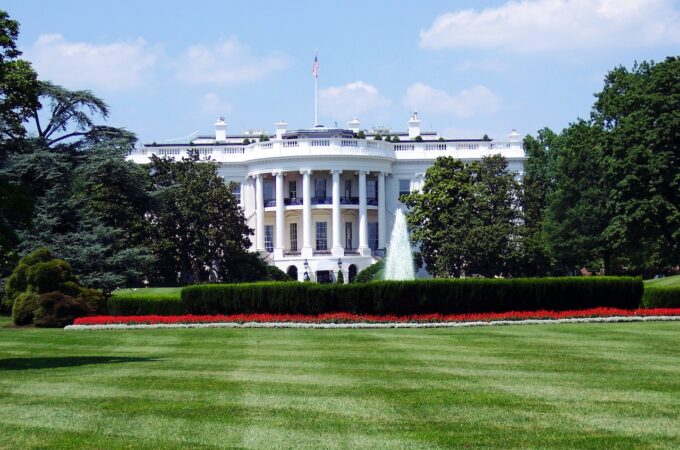
Big Banks Stake Fintech Claims With Patent Application Surge
By Kim Nash for WSJ
Big banks and credit card companies, looking to protect their investments in innovation, have accelerated efforts to patent methods linked to key technologies. Since 2013 large financial institutions have applied for at least 2,679 patents in hot areas such as blockchain, analytics and cybersecurity, a surge of 83% from the prior three years.
The most active areas are mobile systems, Internet of Things and data analytics, according to an analysis by patent researcher Relecura Inc. and The Wall Street Journal, studying patent applications published since 2010 by the U.S. Patent and Trademark Office (see chart). These are areas where startup financial technology firms are thriving, funded with $21.6 billion in venture capital last year alone, according to Dow Jones VentureSource. “Fintech companies are threatening” to established financial firms, said George Koomullil, founder and chief executive of Relecura. “They see that there is change coming.”
Banks in recent years have raced to staff innovation labs to create digital products and capitalize on the data they generate, and address mobility demands from customers. Now firms want to stake territory as they determine how to make money from their inventions, said Will Callender, a partner in the financial institutions practice at A.T. Kearney. “These battlegrounds are changing the way banking is done but exactly how is not yet known.” Mr. Callender said.
Some of these inventions are already incorporated into products. J.P. Morgan Chase JPM 0.00% & Co. started using “cloud wallet” security technology in its Chase Pay mobile payments system while a 2011 patent application was still pending, said Daryl Wooldridge, head of intellectual property management at J.P. Morgan. The patent was granted in 2015.

Other work submitted for patenting is speculative.MasterCard InternationalInc.MA -1.10%, for example, has applied for a patent on a method that uses big data to predict customers’ political affiliations based in part on where they shop. Merchants could use it “to better target customers or enhance existing customer relationships,” according to the patent application, published last year.
The patent office publishes applications up to 18 months after they are filed and can take years to examine an application to decide whether to grant patent protection.
More bank patents are likely pending in key technology areas but not yet published. Inventors can request that the patent office keep applications secret for a period of time, so as not to reveal sensitive work to competitors. J.P. Morgan routinely makes such requests, said Andy Cadel, general counsel for technology, intellectual property and information security at the bank. “We use nonpublication requests for competitive reasons,” Mr. Cadel said. “Patents represent our view of the future.”
J.P. Morgan runs a patent program that includes attorneys, intellectual property professionals and business and technology experts who continuously assess internal innovation work for inventions that could be patentable, Mr. Cadel said.
In 2015, the bank filed at least 22 patent applications related to analytics, Internet of Things, mobile, security, cloud and cryptocurrency technologies, according to Relecura. The number of patent filings this year is so far running 50% higher than last year, said Mr. Wooldridge at J.P. Morgan.
The idea is to protect the company’s investments, he said. The company plans to spend $9.4 billion on technology this year, up from $9.2 billion last year and to allocate 40% of that spending to new technologies and investments, said Matt Zames, chief operating officer, in February.
A key focus for J.P. Morgan is to win patents in highly competitive areas, such as mobile and analytics, so that rivals doing similar work cannot block the bank, Mr. Cadel said. “If we invent something and we file a patent, that means no one else can patent it. We don’t want to find ourselves locked out of using our own invention,” he said.
The bank seeks exclusivity with patents in these areas, but not to close off markets, he said. J.P. Morgan cross-licenses patents with other firms and is a member of the License on Transfer Network, a non-profit patent-sharing group created by technology and automobile companies. “It’s important for us to be part of that ecosystem,” he said.
Bank of America Corp. appears to be a prime mover in cryptocurrency among banks, applying for at least 11 patents since 2013, according to Relecura. They include applications using methods for finding suspicious users on a blockchain, devising a risk score for individual cryptocurrency transactions, and managing the float in converting funds between digital and other currency. Another another 36 are filed but not yet published, a bank spokesman said.
Financial services firms see blockchain, the online ledger technology best known for enabling the Bitcoin digital currency, as technology that can speed up transactions, cut operations costs and better secure the financial infrastructure. Banks are experimenting together with blockchain through the R3 CEV consortium and other joint projects.
But patent-chasing by individual firms could squash blockchain development, said Larry Tabb, founder and chief executive of Tabb Group, a financial markets advisory firm.
“Some of this is defensive. To the extent they can get a patent, they can control it,” Mr. Tabb said. Yet the anticipated speed and efficiency benefits of blockchain can materialize only with wide use by many firms, he said. Like the Internet itself, he said, “blockchain is a network-effect technology. Creating barriers to usage is counterproductive.”
Bank of America seeks patents on applications that use blockchain and cryptocurrency, not the core technology itself, the spokesman said.
First appeared at Wall street Journal





